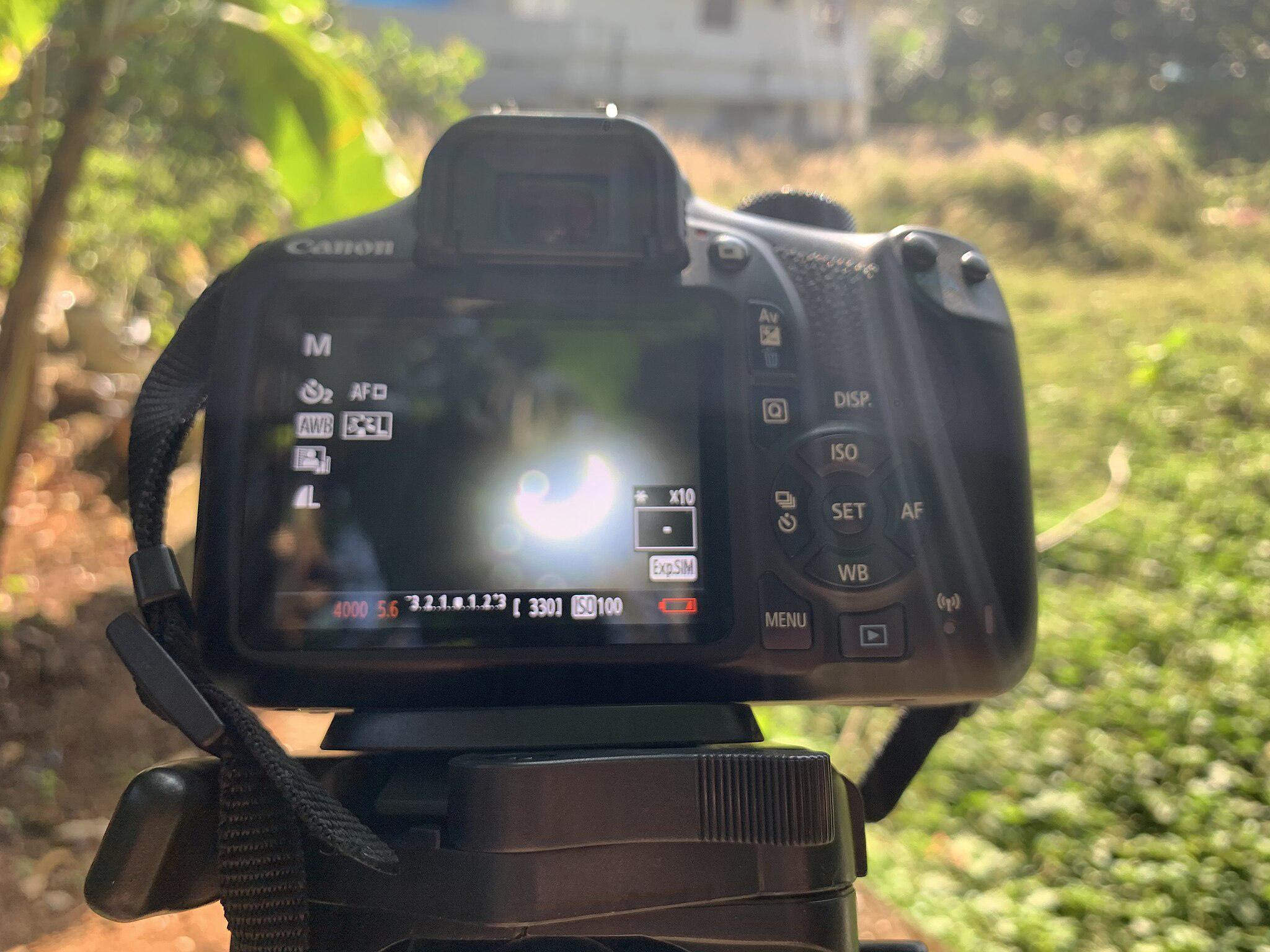Photo by Delse Pauly D M via a Creative Commons Attribution-Share Alike 4.0 International license.
Photographing a solar eclipse can be a thrilling experience, but it requires careful planning and the right equipment. Here are some tips and tricks to help you capture stunning images from SUNY Oswego Visiting Assistant Professor of Art Peter Cardone:
1. Safety first
- Protect your eyes: Remember, safety is the most important aspect when photographing a solar eclipse. Always use ISO-certified eye protection when looking at the sun.
- Use a solar filter: To protect your camera equipment and your eyes from intense light, use an approved solar filter on your lens. This is especially important during the partial phases of the eclipse.
2. Use the right equipment
- Choose the right equipment: A DSLR or mirrorless camera with the longest available lens is ideal for capturing detailed images of the eclipse to make the sun look larger in the frame. A tripod is also recommended for stability, as well as if you don’t want to hold the camera during the whole event.
- Use manual settings: Autofocus might struggle with the high contrast of the eclipse, so switch to manual focus. Pre-focus on the sun or another very distant object before the eclipse starts and check your focus periodically. Set your camera to manual mode to have full control over the exposure. Before the totality of the eclipse, the brightness of the sun and your exposure can be fairly consistent. Once the totality begins and you remove your solar filter, the brightness of the sun will change quickly. Start with settings like ISO 100, f/8 and 1/1000 second and adjust based on the brightness of the sun and the effect you want to achieve.
- Bracket your exposures: The brightness of the eclipse can vary significantly, so bracket your exposures by taking a series of shots at different exposure settings. This will increase your chances of getting a well-exposed image. Auto Exposure Bracketing can help with this.
3. Setup and plan ahead
- Practice beforehand: If possible, practice photographing the sun on days leading up to the eclipse at the same time of day. This will help you get comfortable with your equipment and settings.
- Plan your composition: Think about how you want to frame the eclipse. Will you include foreground elements for context or will you focus solely on the sun? Plan your composition in advance.
- Be ready for totality: If you're in the path of totality, be prepared for the sudden darkness. Have a flashlight handy, and be ready to quickly remove your solar filter and adjust your camera settings to capture the corona.
Many individuals will want to capture photos with their smartphones and that also brings challenges. With the right techniques and equipment, you can capture some great shots. Here is a bonus point for those who plan to use a phone camera:
Bonus: Mobile mastery
- Use a solar filter: Just like with a DSLR, you need to protect your phone's camera sensor with a solar filter. You can buy a solar filter for your phone or attach a pair of ISO-certified solar eclipse glasses in front of the phone’s camera lens.
- Use an app for manual camera settings: If your phone allows manual control of camera settings, use it to adjust exposure and focus. If possible, set your phone's camera to manual focus and pre-focus on the sun before the eclipse starts. This will help ensure sharp images. You can also use an app if your phone doesn’t have manual options.
- Use a zoom lens attachment: If you have a zoom lens attachment for your phone, use it to get a closer view of the eclipse. Be aware that digital zoom can reduce image quality, so optical zoom is preferable.
Remember, safety is the most important aspect when photographing a solar eclipse. You will want to use proper solar filters and eye protection to prevent damage to your eyes and your camera equipment.
While it’s exciting to capture the eclipse, don’t forget to take a moment to experience the event with your own eyes (safely, of course).
For more information on how you can view the solar eclipse and get involved in activities at SUNY Oswego, visit oswego.edu/eclipse.




